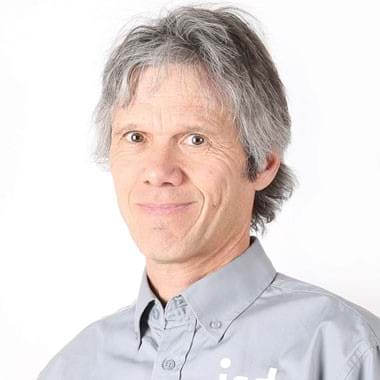Improve the productivity and survival of switchgrass in the long term to make producers' investment profitable and promote its use on fallow and marginal lands

Marc-Olivier Gasser
Researcher, agr., Ph.D.
418 643-2380
ext 650

Catherine Bossé
Project Manager – Pedology, agr.
418 643-2380
ext 405

Jean-Benoît Mathieu, M. Sc.
Description
Switchgrass (Panicum virgatum L.) can produce significant quantities of straw biomass on marginal lands for several years with low inputs. Its productivity can, however, be limited by both climate and soil conditions, such as drainage, water retention, depth of rock, presence of hardened layers, acidity and natural fertility. Producers have reported that areas of mortality can appear within a field, and that some fields show signs of degeneration of the switchgrass cover after only 3 to 7 years of production. The limitations presented in soil maps in marginal lands are poorly taken into account in switchgrass cultivation budgets and can greatly affect profitability.
The project therefore aims to better understand the factors limiting the longevity and productivity of switchgrass on marginal lands in the different regions of Quebec and to formulate recommendations to ensure this productivity, if not inform the producer about the limits of their investment. Producers growing switchgrass in Quebec will be invited to provide information on their fields in an interactive platform allowing them to compare the productivity of their crop to the regional average considering the soil and climatic conditions specific to their fields. At the same time, a sampling campaign as well as soil profiles will be carried out on a dozen producer sites to clarify the effects of these limiting factors on productivity.
Objective(s)
- Raise the limiting conditions that could affect the cultivation of switchgrass by an inventory of fields cultivated with switchgrass in Quebec;
- Investigate among producers the conditions limiting the productivity and longevity of switchgrass on marginal lands;
- Define the productivity potential of switchgrass on marginal lands and report the causes of decline associated with soil limitations;
- Develop tools to inform producers about the land improvements to be made and the return on investment of these improvements.
From 2024 to 2026
Project duration
Field crops
Activity areas
Canada Land Inventory, Inventory of Québec agricultural soil degradation problems, Soil surveys
Services
Partners
CÉROM (Centre de recherche sur les grains) / CECPA (Centre d’études sur les coûts de production en agriculture) / FADQ (Financière agricole du Québec) / CQPF (Conseil québécois des plantes fourragères) / MSF (Mon Système Fourrager) / MAPAQ (Ministère de l'Agriculture, des Pêcheries et de l'Alimentation du Québec) / AAC (Agriculture et Agroalimentaire Canada)
This may interest you
Climate extremes and fertilizer efficiency in organic grain crops
A literature review, a survey of organic grain producers, and an analysis of historical yield and climate data in order to document the effects of climate extremes on yields and soil nutrient availability.
Researcher: Marc-Olivier Gasser

Economic cost of herbicide resistance in weeds found in field crops
The aim of the project was to estimate the economic impact of herbicide resistance in weeds.
Researcher: Luc Belzile
Development of cover crop techniques and their adaptation to the Estrie region
IRDA was in charge of conducting the economic analysis for this project carried out by Club agroenvironnemental de l’Estrie (CAE Estrie).
Researcher: Luc Belzile

